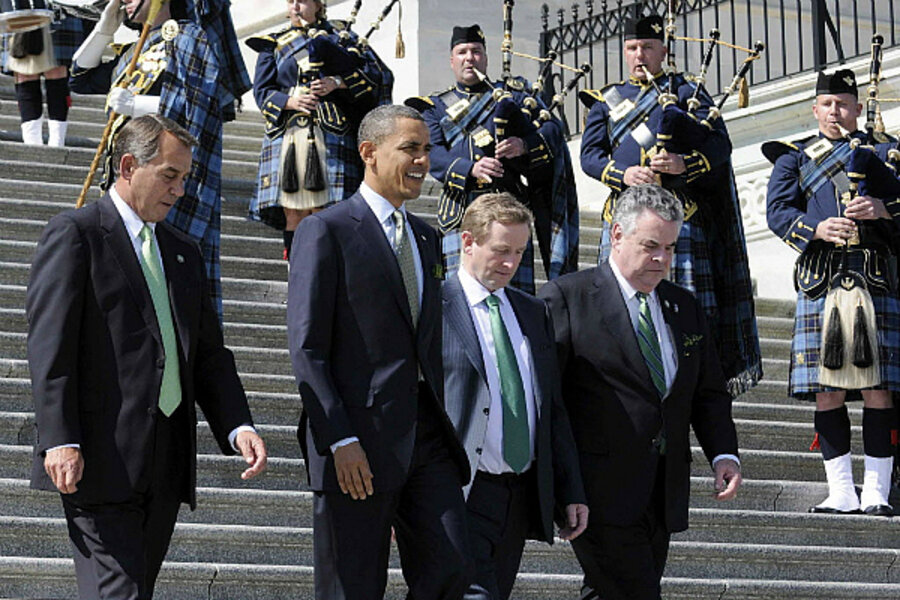St. Patrick's Day: Quick, which US president was most Irish?
| Washington
With St. Patrick’s Day upon us, this question comes to mind: Who’s the most Irish US president?
OK, “most Irish” isn’t exactly a scientific category. And lots of presidents claim ties to the Emerald Isle, including President Obama, who visited his ancestral home in Moneygall, County Offaly, last year.
But the answer is obvious. He’s a Democrat. He’s often included in historians’ lists of the Top 10 US chief executives. And he isn’t who you think.
Presidents play up Irish heritage for one big reason: votes. About 12 percent of the US population considers itself of Irish descent, according to census data.
The days of Irish control of big cities are long past. But pockets of Irish political strength remain in Boston, Philadelphia, and other metro areas. Irish heritage is so widespread in the United States that in some ways a little wearing of the green emphasizes a politician’s American heritage.
That’s why Mr. Obama is hosting his Irish eighth cousin at the White House this year. It’s why Bill Clinton threw a St. Patrick’s party that ended with a line dance to “When Irish Eyes Are Smiling.” It’s why Richard Nixon once considered leading a St. Patrick’s Day parade – in Dublin.
Ten US presidents had fairly direct ties to Ireland, while more than 22 have Irish progenitors – however distant – on their family trees. Ronald Reagan loved to get together with House Speaker Tip O’Neill for a little Irish-themed humor. (Sample Reagan joke: “My father told me that the Irish built the jails in this country – then proceeded to fill them.”) However, Reagan was only moderately Irish; his great-grandparents on his father’s side had come to the US from County Tipperary.
Then there was John Kennedy. He’s the one you picked as “most Irish,” right? Wrong. You have to go back to Kennedy’s great-grandparents to find ancestors who were Irish-born.
Our pick? Andrew Jackson. Old Hickory was a founder of the modern Democratic Party and a fierce supporter of individual rights (except for native Americans). He is the only president whose parents were both born in Ireland. They left County Antrim for the New World in 1765, two years before Andrew was born.





